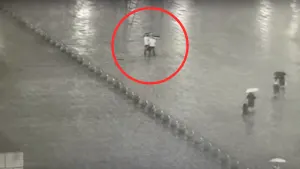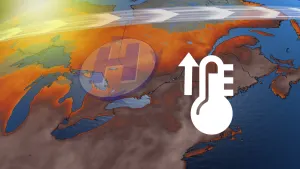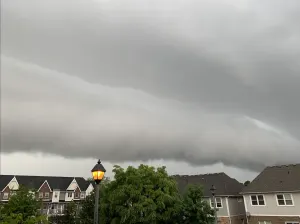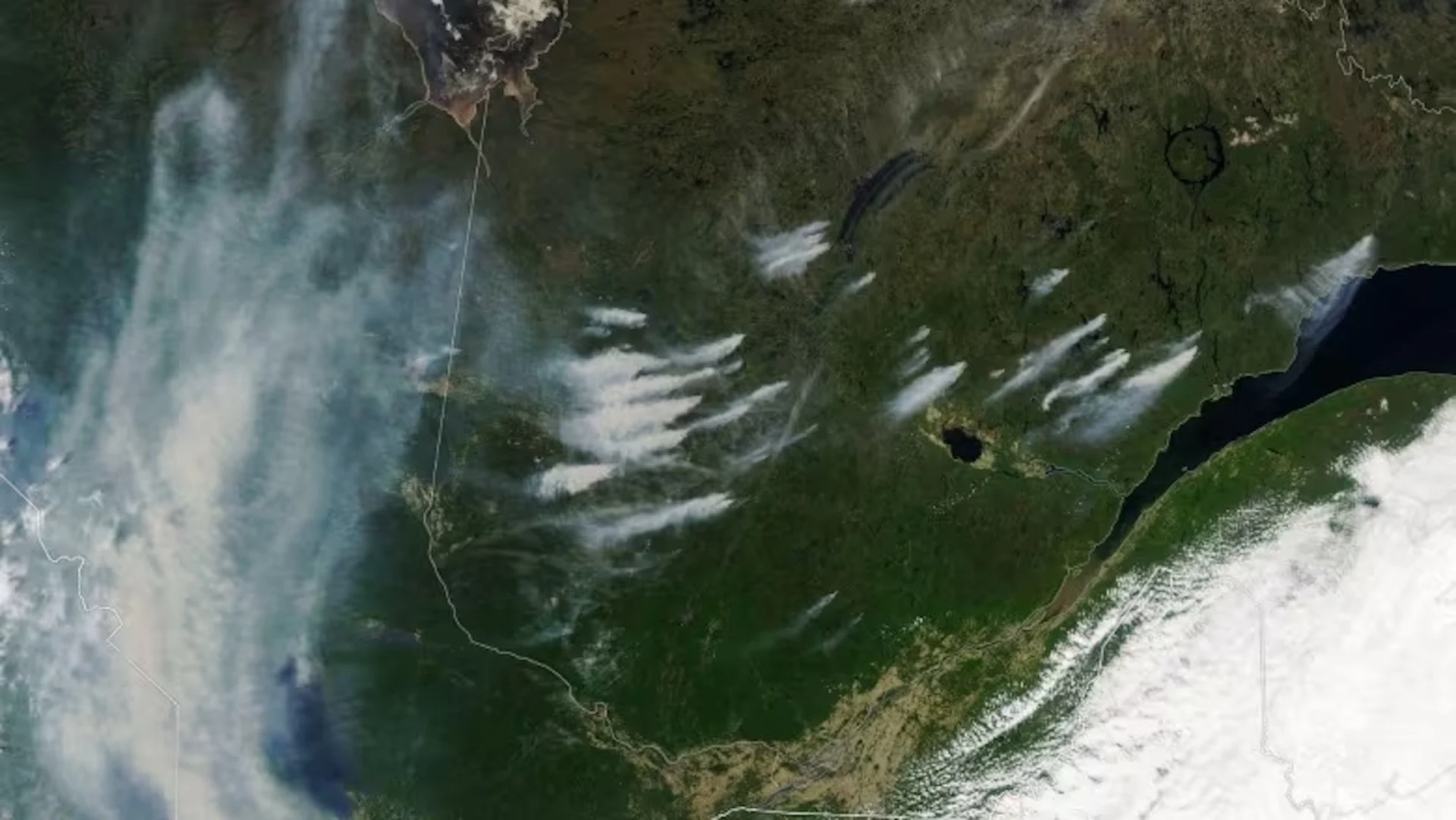
Lightning-caused wildfires burn the most area in Canada, and that may increase
Early last June, a powerful storm descended on southern Quebec, leading to lightning strikes in quick succession across the vast forest north of Montreal.
Given the hot, dry conditions at the time, the strikes quickly turned into scores of wildfires that overwhelmed fire crews and quickly spread through the region.
The early June fires, clearly visible from space, contributed to conspiracy theories that the fires had been deliberately set all at once.
SUMMER 2024: Get an in-depth look at the Summer Forecast, tips to plan for it, and much more!
In fact, a series of lightning-caused fires one after another is common in the boreal forest — and part of the natural forest cycle.
But experts are concerned lightning-caused fires could become more common and lead to larger wildfires as the climate warms.
"In many regions, lightning is becoming the No. 1 source of new fire starts," said Mike Flannigan, a wildfire scientist at Thomson Rivers University in Kamloops, B.C.

Ten-year rolling average shows proportion of wildfire causes in Canada. (Natural Resources Canada, National Fire Database, Canadian Interagency Forest Fire Centre (Graeme Bruce/CBC))
"Research suggests as we get warmer we expect more lightning, and the other side of this is research also suggests that our fuels will be getting drier as we continue to warm."
Biggest fires 'typically lightning-caused'
Roughly half of Canada's wildfires are caused by lightning. The other half are attributed to humans, which can mean everything from a campfire that wasn't put out to power lines brought down by high winds. (Arson generally accounts for between one and four per cent of human-caused fires annually, Flannigan said.)
Human-caused fires are on the decline in Canada, data shows.
"We attribute that to fire prevention, and fire managers getting the message out there and also when they put in place burn bans," said Chelene Hanes, a wildfire research scientist with Natural Resources Canada based in Sault Ste. Marie, Ont.
Lightning-caused fires result in a far larger area burned — typically around 90 per cent of the total in a given season.
These fires tend to be more intense and occur in more remote areas during periods of extreme dryness favourable to large wildfires.

Total hectares burned in wildfires in Canada. (Natural Resources Canada, National Burned Area Composite (Graeme Bruce/CBC))
During last year's record-breaking season, 59 per cent of Canada's wildfires were the result of lightning strikes, leading to more than 93 per cent of the area burned, according to federal data.
"Our biggest fires are typically lightning-caused fires and we have seen an increase in that," said Hanes.
Widespread drought conditions made it easier for lightning-caused fires to spread quickly, she said.
"When you get a lot of lightning strikes at once, you can easily exceed that capacity of what fire management agencies are able to deal with. That's essentially what happened in in Quebec last spring."
Many of Canada's fires were so big and powerful that they created storm systems themselves, known a pyrocumulonimbus events. There were an unprecedented 140 documented cases of these powerful lightning storms in Canada last year, according to a pre-print study documenting the 2023 fire season.
Better tracking needed
Each province and territory keeps their own records of how fires start.
For example, this year, researchers are also tracking more fires that smoulder underground in winter, known as overwintering fires or "zombie" fires. There were more than 100 documented in February, primarily in Western Canada.
But not every province tracks overwintering fires, experts told CBC. Quebec, for instance, reported there were no overwintering fires on its territory last year, even though satellite imagery showed some burning in the province.
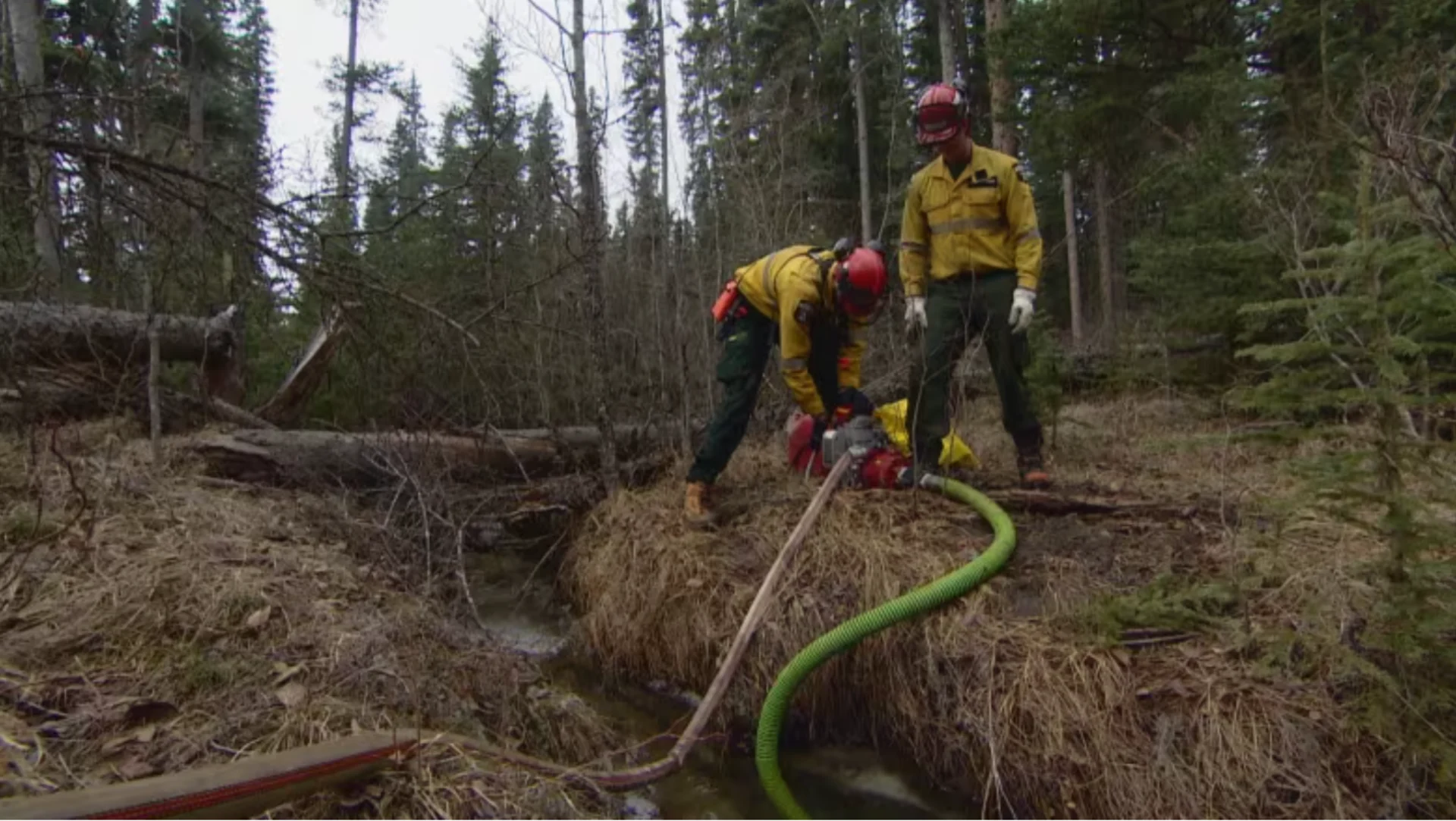
(Peter Evans/CBC)
"We don't necessarily have solid numbers," said Ellen Whitman, another wildfire scientist at Natural Resources Canada.
"We're noticing them more and it's possible and very likely that they are changing, but it's also we don't have a great handle on how common they were in the past."
In general, Whitman said these overwintering fires need to be better understood, and better monitored.
John Little, a spatial data analyst with the Canadian Forest Service, who compiles national data, said fire records in general vary by jurisdiction. He said Natural Resources Canada is working to to "adopt standards for fire cause and all other attributes for reported fire data, in order to improve the standards for information sharing."
Flannigan said determining the cause of wildfires remains a challenge and important to keep them under control.
"If we want to manage fire, we need to understand it and to understand it we need to know the causes," he said.
WATCH: June-ary: What is means for summer and wildfires in B.C.
Thumbnail courtesy of Lauren Dauphin/NASA via CBC.
The story was originally written by Benjamin Shingler and published for CBC News.






